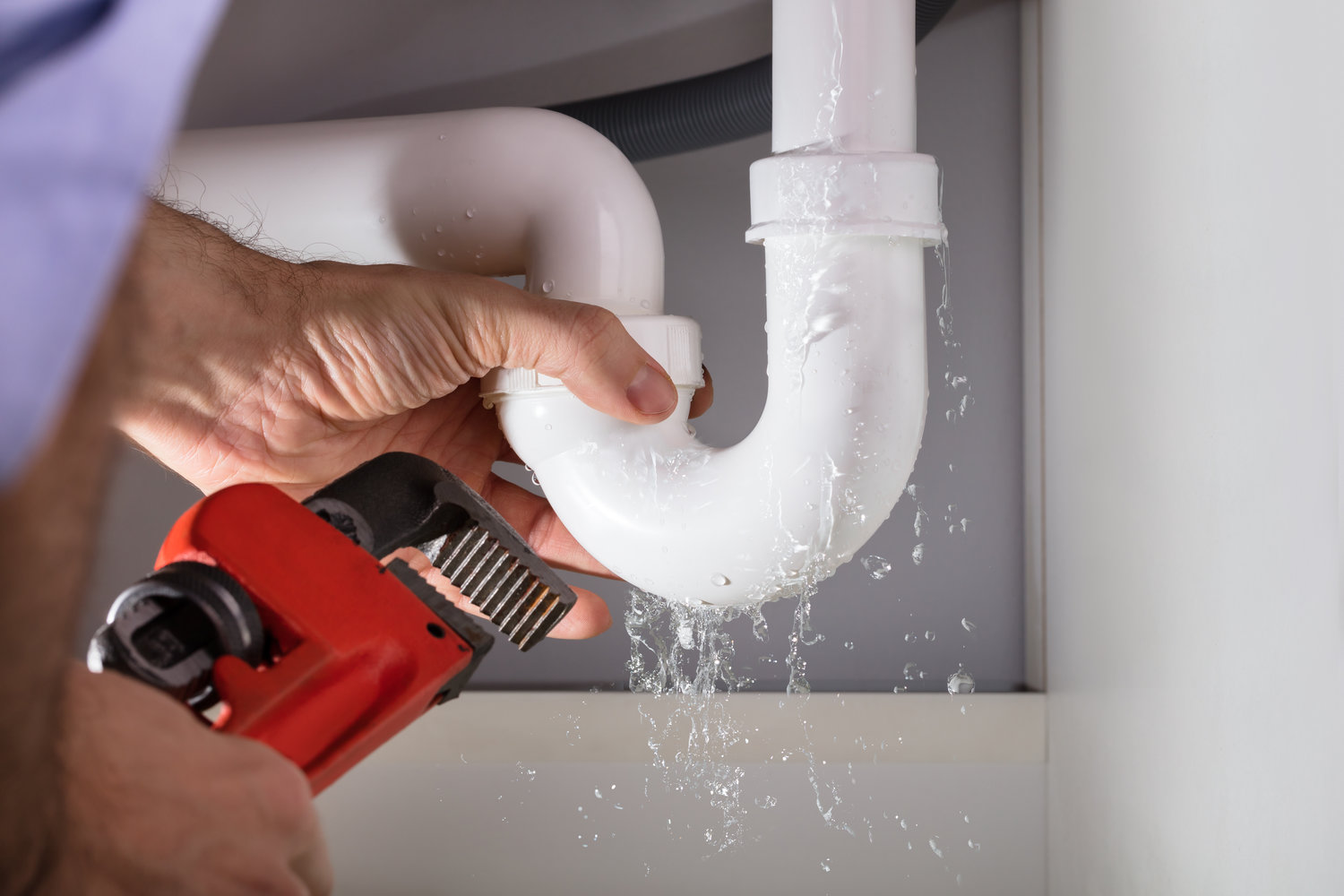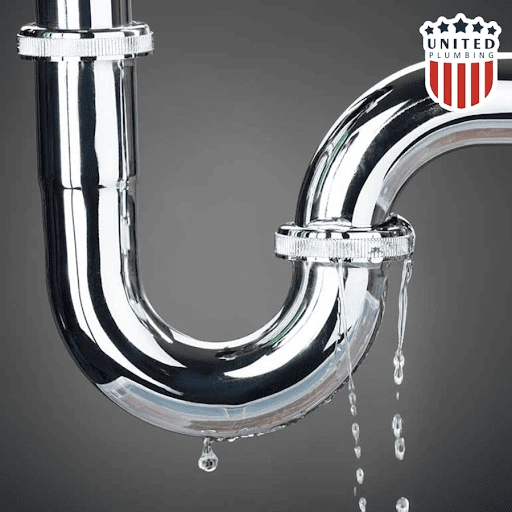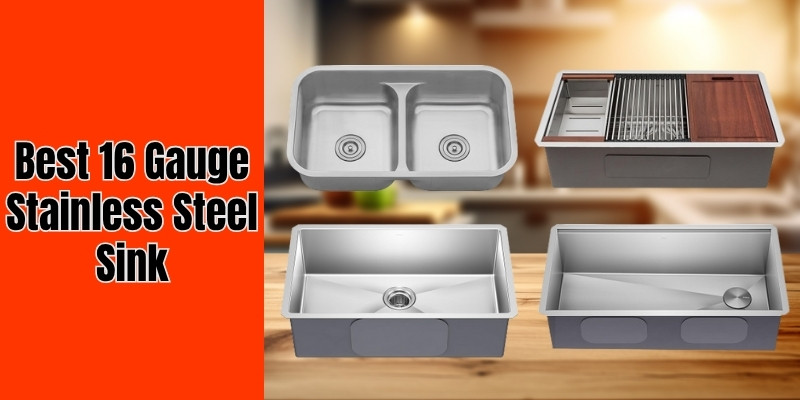Disclosure: This post contains affiliate links and I will be compensated if you make a purchase after clicking through my links. Learn More
Imagine waking up to the sound of dripping water, realizing it’s not just a dream. Plumbing leaks can turn your peaceful morning into a stressful scramble.
But you’re not alone. Many homeowners face the frustrating challenge of plumbing leaks. Understanding the common causes can save you time, money, and headaches. You might wonder, “Why is this happening to me? ” The answer could be simpler than you think.
You’ll discover the usual culprits behind plumbing leaks and learn how to tackle them before they wreak havoc on your home. Don’t let these sneaky leaks catch you off guard; arm yourself with the knowledge to protect your sanctuary. Dive in, and uncover the secrets to a leak-free home.

Credit: www.bl3inc.com
Aging Pipes
Plumbing leaks can be a homeowner’s nightmare, often stemming from a simple yet significant culprit: aging pipes. As your home grows older, so do its pipes, and with age, they become vulnerable to various issues. Recognizing the common causes of leaks due to aging pipes can save you from unexpected repairs and costly damages.
Corrosion Effects
Corrosion is a silent enemy of your plumbing system. Over time, pipes made from metals like iron or steel can rust. This rust eats away at the pipe walls, leading to weak spots and eventually leaks.
If your home is older than 20 years, chances are your pipes are starting to corrode. Have you noticed any discolored water or reduced water flow? These might be signs of corrosion at work.
Addressing corrosion early can prevent bigger issues. Regular inspections and maintenance are key to catching corrosion before it causes significant damage.
Material Deterioration
Not all pipes are created equal. Materials like PVC, copper, and galvanized steel each have their lifespan and aging process. PVC, for instance, can become brittle over time, while copper might develop pinhole leaks.
Think about the materials used in your home’s plumbing. Are they nearing the end of their expected lifespan? This knowledge can guide you in planning necessary replacements.
Replacing deteriorated pipes might seem daunting, but it’s a proactive step that can save you from emergency plumbing calls. What might seem like a small leak now could become a major issue overnight.
As a homeowner, staying informed about the state of your pipes is crucial. How do you plan to tackle aging pipes in your home? The right maintenance today could save you from a flood tomorrow.

Credit: www.aprestoration.com
High Water Pressure
High water pressure can cause plumbing leaks. It’s a silent troublemaker in many homes. Water rushing too fast can strain pipes and fixtures. This strain often leads to leaks. Understanding the impact of high water pressure is vital.
Impact On Joints
Pipe joints are weak spots. High pressure stresses these joints. Over time, they can wear out. Leaks then appear where joints connect. Dripping water can damage floors and walls.
Pressure Regulation Issues
Homes need proper pressure regulation. Without it, pressure can spike unexpectedly. This can happen suddenly. Pipes may not handle the surge. Leaks occur when pressure is too high. Regular checks can prevent these problems.
Temperature Fluctuations
Plumbing leaks can be a homeowner’s nightmare, often arising from factors you wouldn’t immediately suspect. One such hidden culprit is temperature fluctuations. As the seasons change, so does the temperature, impacting your plumbing system in subtle yet significant ways. Understanding how these fluctuations affect your pipes can help you prevent leaks and avoid unnecessary repairs.
Expansion And Contraction
Temperature changes cause your pipes to expand and contract. Imagine your plumbing system as a living organism that reacts to its environment. When the weather heats up, pipes expand; when it cools down, they contract. Over time, this constant movement can lead to cracks or joints loosening, creating leaks.
Think about the last time you had to adjust to a drastic weather change. Just like you might need a warmer coat, your pipes need to withstand stress without breaking. Regularly inspecting your plumbing for any signs of wear can be a proactive way to catch potential leaks early.
Seasonal Changes
Each season brings its own challenges to your plumbing system. In winter, freezing temperatures can cause water inside pipes to freeze and expand, leading to bursts. Summer heat, on the other hand, can make pipes expand, increasing pressure on joints and seals.
How do you prepare your home for seasonal shifts? Insulating your pipes during winter is a practical step that can save you from a costly repair. Also, maintaining a consistent indoor temperature can help stabilize your plumbing system, reducing the risk of leaks.
Have you ever considered how temperature fluctuations might be impacting your plumbing? By understanding these changes and taking simple preventive actions, you can protect your home from unexpected plumbing issues. Remember, a small step now can save you from a big headache later.
Tree Root Intrusions
Tree root intrusions are a common cause of plumbing leaks. Roots naturally seek water and can invade pipes, causing damage. This results in leaks and blockages that disrupt home plumbing systems. Regular maintenance and inspection can help prevent these issues.
Tree roots can be a hidden danger to your plumbing. They search for water and nutrients underground. Pipes carrying water become perfect targets. Roots find even the smallest cracks in pipes. Once inside, they expand and cause leaks. Understanding how roots grow helps prevent plumbing issues.
Root Growth Patterns
Roots grow where they find moisture. Water pipes often provide this. Tiny cracks in pipes release moisture into the soil. Roots sense this and grow towards the source. As roots enter these cracks, they expand. This pressure causes significant damage to pipes. It’s a slow process but very harmful. Regular inspection of pipes is crucial.
Soil Shifting
Roots are not the only issue. Soil movement also affects pipes. As roots grow, they can move soil around. This shifting soil can misalign pipes. Misaligned pipes develop leaks over time. Soil also shifts naturally with weather changes. Heavy rain or drought can cause soil movement. Roots growing in unstable soil add to the problem. Monitoring soil conditions helps in early detection.
Poor Installation
Poor installation is a frequent cause of plumbing leaks. Improper techniques can lead to future issues. Even new plumbing systems can suffer from leaks if not installed correctly. The risk of leaks increases if components are not properly connected or sealed. Homeowners might face costly repairs due to these problems. Understanding the common causes can help in preventing leaks.
Faulty Connections
Connections in plumbing must be tight and secure. Faulty connections are a common cause of leaks. If pipes are not joined correctly, water can seep through. This can lead to significant damage over time. Regular checks can identify and fix loose connections. Ensuring proper alignment is crucial for preventing leaks.
Improper Sealing
Sealing is essential in preventing water leaks. Improper sealing can allow water to escape from pipes. This often occurs around fixtures or joints. A poor seal can deteriorate over time, worsening the leak. Using the correct sealing materials is important. Regular maintenance can prevent sealing issues. Always ensure seals are intact and secure to avoid leaks.
Clogged Drains
Clogged drains are a frequent issue in many homes. They can lead to plumbing leaks if not addressed promptly. Understanding the causes and effects of clogged drains can help prevent costly repairs. This section explores how blockages occur and their impact on pipe integrity.
Blockage Causes
Various factors contribute to drain blockages. Hair is a common culprit in bathroom drains. It tangles and clumps, forming stubborn clogs. Kitchen sinks often face issues from food particles. These particles, along with grease, can create hard-to-clear obstructions. Soap residue also plays a role. Over time, it builds up and narrows pipe paths.
Effects On Pipe Integrity
Clogs strain pipes significantly. The pressure from blockages can cause pipes to crack or burst. This leads to leaks, water damage, and costly repairs. Persistent clogs weaken pipe joints and connections. They accelerate wear and tear on plumbing systems. This results in frequent maintenance needs and potential replacement.
Chemical Drain Cleaners
Plumbing leaks often stem from chemical drain cleaners that corrode pipes. These harsh chemicals can weaken the pipe material, leading to cracks or breaks. Regular use increases the risk of leaks and costly repairs.
Chemical drain cleaners are a common household item many people reach for when faced with a clogged sink or shower. They promise quick results, but at what cost? You might be surprised to learn that these seemingly helpful solutions can actually lead to plumbing leaks and other issues. Let’s dive into why this happens and explore some safer alternatives.
Corrosive Damage
Chemical drain cleaners are powerful because they contain harsh substances designed to dissolve blockages. However, these same chemicals can eat away at your pipes over time. Whether your plumbing is made of metal or PVC, the corrosive nature of these cleaners can cause significant damage. Imagine pouring a strong acid down your pipes repeatedly. Over time, the inner surface of the pipes weakens, leading to leaks.
A small leak may seem manageable at first, but it can escalate into a major problem, potentially causing water damage and higher repair costs. If you’ve ever noticed a persistent leak after using a drain cleaner, it’s likely the chemical reaction has started to take its toll. It’s a classic case of solving one problem only to create another.
Alternative Solutions
So, what should you do when faced with a stubborn clog? Fortunately, there are several effective and safer alternatives to chemical drain cleaners. One popular option is using a plumber’s snake or drain auger, which physically removes the blockage without introducing harmful chemicals.
You can also try a homemade mixture of baking soda and vinegar. This combination creates a natural fizzing reaction that can help clear minor clogs. It’s gentle on your pipes and a more eco-friendly choice. Regular maintenance can prevent clogs from forming in the first place. Consider using a drain strainer to catch hair and food particles.
This simple tool can save you from reaching for those damaging chemicals altogether. Have you considered the long-term effects of using chemical drain cleaners in your home? Next time you’re faced with a clog, weigh your options carefully. By choosing safer alternatives, you protect not only your plumbing but also your peace of mind.
Environmental Factors
Environmental changes, such as temperature shifts, can cause plumbing leaks. Pipes expand in heat and contract in cold. This constant movement can lead to cracks or breaks. Additionally, soil erosion around pipes can weaken their structure, increasing leak risks.
Plumbing leaks can be a homeowner’s nightmare, often leading to costly repairs and water damage. While many leaks are caused by wear and tear or faulty installation, environmental factors play a significant role too. Understanding these factors can help you prevent leaks before they start.
Soil Erosion
Soil erosion can be a sneaky culprit behind plumbing leaks. When the soil around your home shifts, it can cause pipes to move or crack. This is especially common in areas with heavy rainfall or poor drainage. Consider a friend who noticed a sudden spike in their water bill.
They discovered the soil erosion around their home had shifted a pipe, causing a slow leak. Have you noticed any unusual damp spots in your yard? It might be worth checking if soil erosion is affecting your pipes.
Seismic Activity
Living in an earthquake-prone area brings unique challenges to your plumbing system. Seismic activity, even minor tremors, can stress pipes and joints, leading to leaks. A small earthquake in my neighborhood once caused a tiny crack in my water line. A quick repair saved me from a bigger mess.
If you live in such areas, consider having your plumbing system inspected regularly. Are your pipes earthquake-ready? By being aware of these environmental factors, you can take proactive steps to protect your plumbing and avoid unexpected leaks. Stay vigilant and keep your plumbing system in check!

Credit: plumbing-united.com
Final Words
Plumbing leaks can cause big problems at home. They waste water and money. Leaks often start from worn-out pipes or loose connections. Sometimes, high water pressure or clogs create issues. Regular checks help spot leaks early. Fixing small leaks prevents bigger troubles.
Always use quality materials for repairs. Hiring a professional plumber ensures proper fixes. Keep your plumbing system healthy with routine maintenance. Small steps today can save headaches tomorrow. Stay alert to any signs of leaks. A well-maintained plumbing system keeps your home safe and dry.


